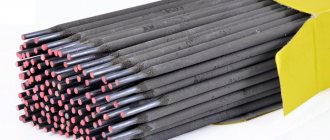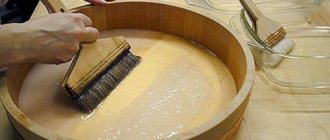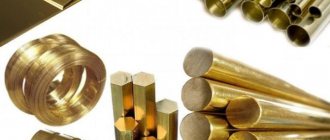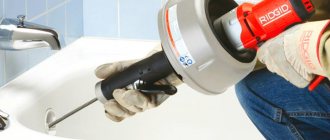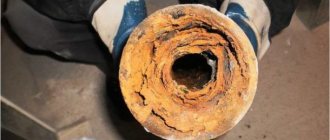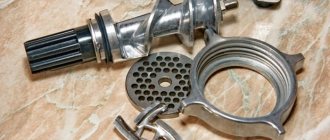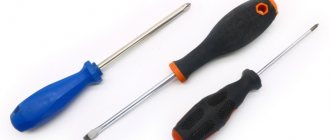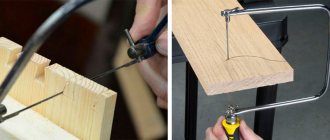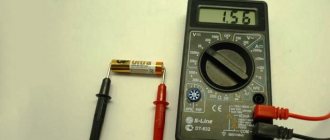When going fishing, we choose gear for certain types of fish, for example, special carp rigs are tied for carp, and bream rigs are used for catching bream. Silver carp is no exception; catching silver carp with technoplankton is a type of fishing specialized for this fish.
This equipment is designed for catching only one type of fish and accidental bites from other aquatic inhabitants on it are practically excluded. We are talking about a silver carp killer, a rig with a float that allows you to catch trophy fish.
At first glance, it is difficult to imagine a float tackle that catches fish weighing 10 kg or more, but it is quite realistic and not only professionals, but also ordinary fishing enthusiasts achieve good results. Nowadays, catching silver carp with a silver carp killer tackle has become very popular and deserves close attention.
The nuances of catching silver carp
As you know, silver carp, or silver carp, is an artificially bred fish, and water bodies overgrown with grass, rural bets and ponds have been actively stocked with it. The benefits of silver carp in terms of cleaning water bodies can hardly be overestimated, so now it is found almost everywhere.
Even if the fish was not deliberately put into stock, its eggs are carried by birds, and during high water, large specimens also migrate. Due to the fact that silver carp feeds on plankton, for a long time it was not possible to create equipment capable of purposefully catching this fish.
There are situations when silver carp are caught using carp gear and, especially, gear for white carp, but of course, it cannot be said that they are always successful when catching “silver carp”. The fact is that, unlike carp, which mainly feeds in the bottom layer, silver carp moves in the water column and searches for food at all depths.
Aquatic vegetation is found at different depths, but it has been noticed that silver carp prefers to feed from the surface. This means that the tackle for catching silver carp must float near the surface of the water, and this is possible when using a float. When developing methods for catching silver carp, the most difficult thing was to choose bait that could attract trophy fish.
Even carp are caught on young shoots of reeds, but using such baits on silver carp is useless, and this is due to the way it feeds. Unlike carp or grass carp, which suck up food, silver carp swims with an open mouth and filters large volumes of water, along with which nutrients enter its mouth.
Therefore, the bait for silver carp should be attractive and lure the fish, and the hook should be placed in such a way as to quietly enter the fish’s mouth and catch it in the soft tissue.
It is important to understand that silver carp has a hard lip and to prevent slips and false serifs, very sharp and strong hooks with a wide bend are used. But the main thing is still bait, and only with the invention of technoplankton did it become possible to purposefully catch trophy silver carp.
Place and time of fishing
When all the gear is ready for fishing, and the technoplankton has been purchased or prepared, you can begin a new stage - finding a place to catch silver carp.
This type of fish prefers to stay near the following places:
- Areas of a body of water whose bottom has a rocky or sandy structure. If there are no such places, then you can look for prey in places with a clay bottom surface.
- The optimal depth at which you need to look for silver carp is 2-3 meters, in some cases you can go down to 4 meters. Sometimes this fish is located even deeper, but this happens extremely rarely, so it is not recommended to deviate from the indicated indicators.
- The wind is another guideline for choosing a fishing spot; it’s good if it’s headwind. And when it blows towards small bays, you can be sure that this is an ideal place to find silver carp.
- Places with sharp changes in depth levels , especially in small reservoirs with a rocky shore, are also ideal for fishing, since in them you can find not just single individuals, but whole schools of fish.
- Places with a lot of vegetation , contrary to what many people think, are not a good solution for finding silver carp, since fresh greenery, algae and dense thickets do not attract it, unlike many other fish species.
If we talk about the time of day that is most suitable for fishing, then most often weather conditions have a much greater influence on the bite. Silver carp becomes significantly more passive in the absence of wind, high atmospheric pressure, severe cloudiness or changes in temperature.
During the occurrence of such unfavorable conditions for it, the chances of a daytime bite are virtually completely absent; in the evening the fish becomes more active, but even at these hours it is quite difficult to assess the chances of success.
She begins to be more active closer to midnight, when her appetite awakens. Silver carp continues to feed until the early morning, and then loses activity again, so night fishing is considered the most productive.
Technoplankton is an effective bait for silver carp
Technoplankton for silver carp is a bait in the form of pressed cylinders, which, when released into the water, creates a cloudy cloud that can interest the fish and attract it to the hooks.
Each manufacturer keeps the composition of this bait a secret, but it is known that it definitely contains grain waste, starch and milk powder. All ingredients are ground to the smallest particles and pressed in special molds, because barrel-shaped bait is easier to attach to the tackle.
If the price of grains is low, then starch and even more so milk powder are more expensive and therefore not every fisherman buys store-bought technoplankton in the required quantities.
Considering that one tablet (cylinder) of technoplankton is completely eroded in 40–60 minutes, for a long session you will need several dozen such cylinders, which means considerable expenses will be incurred.
The solution to this problem was found thanks to recipes for homemade bait, which is made at home using primitive equipment. You can make a homemade press yourself, or order it to be made by specialists.
Thanks to the use of a press, the angler has the opportunity to experiment with the composition of the bait and bring it to perfection. At the same time, manufacturing costs are 3–5 times lower than when purchasing store-bought technoplankton.
However, most homemade bait recipes contain ground grains and binding components that help compress the mixture and keep it solid. The time it takes to dissolve in water depends on the hardness of the bait, so the presses must provide strong pressure.
Fishing technique
The last thing that fishermen who go after silver carp absolutely need to know is the specifics of the technique and tactics of catching it; there is nothing complicated about them.
The main requirements and recommendations regarding this process that can help increase catch are given below:
- Pre-prepared equipment is pointedly thrown into the fishing area.
- After a perfect cast , it is recommended to place the rod on a special stand, and not hold it in your hands, this minimizes the risk that the silver carp may notice the fisherman.
- When using a regular fishing rod, the bite is controlled in the traditional way by the reaction of the float. If bottom tackle was used, then this process is carried out by observing the end of the rod, but for convenience it is recommended to equip the bottom with a bell or an electronic alarm so that information about the bite can be obtained using sound.
- The first bite can begin no earlier than 1.5-2 hours after casting the bait , since technoplankton needs time to spread in the water. As soon as the silver carp smells it, it will immediately swim to the required place and begin to suck in food, while it must swallow one of the hooks. As soon as this happens, it is necessary to immediately hook the prey.
- There is no need to rush into fishing ; it is better to take the prey to a cleaner area of the reservoir so that it does not scare away its relatives. As soon as the silver carp is tired enough and stops resisting, you can begin to pull it ashore.
What is a trempel used for?
But technoplankton is only half the solution to the problem, because it needs to be secured somehow, and the hooks must be tied so that they are next to the bait. The so-called rigid wire trempel, shaped like an inverted letter “F,” helps with this.
Homemade tramples are made from bicycle spokes, which are equipped with protective caps on a screw fastening. The technoplankton tablet has a through hole into which a knitting needle is threaded and securely secured with a cap.
Hooks are tied to the trempel eyes, which, after casting the tackle, are located in close proximity to technoplankton, which creates a dusting effect.
It must be said that traps are also used when catching silver carp from the bottom of a reservoir, but the gear there is different and the requirements for it are also different. The “silver carp killer” tackle must catch fish in the upper and middle layers of the water, and for this a float is needed.
Silver carp
Silver carp
Silver carp (silver carp) is a large schooling fish of the carp family.
The history of the development of this type of fish originates in the Far East, but at present, silver carp has been introduced into the reservoirs of Europe and Central Asia.
Silver carp is a very good ameliorator of a reservoir, as it feeds on phytoplankton and zooplankton, filtering the water. In this regard, silver carp are often bred in reservoirs with dense underwater vegetation.
The fish has a high culinary value; fishermen have learned to make delicious balyk from silver carp and a host of other dishes.
Float for the “silver carp killer”
The metal frame for attaching technoplankton (trempel) itself weighs a lot, and the tablet itself is also attached to it. That is, the carrying capacity of the tackle float must correspond to the weight of the frame, cylinder and hooks, and it must lift this weight to a given depth.
Therefore, a large foam float is used to install the “silver carp killer”. Polystyrene foam does not absorb water and even after being wet for a long time, such a float will not lose its buoyancy. On the other hand, this synthetic material is lightweight, which means that the tackle will be easier to throw over long distances.
To make it easier to monitor the float and timely register a bite, it is painted bright red or yellow with a special paint that does not fade in the sun. The float antenna is made of a thick plastic tube, the ends of which are sealed and a hole is made in the lower part for passing the fishing line.
Another hole is made in the float body in order to stabilize its position in the water after casting. Instead of a plastic tube, a wooden pin can be used, as long as it is buoyant.
Making a float for the “silver carp killer” with your own hands is not at all difficult, but its store price is also quite low, so the purchase will not require significant financial investments.
What kind of fish is caught on technoplankton?
Technoplankton is designed to catch those fish that absorb food while eating. The composition of any technoplankton recipe always contains components that allow the fish to feed in this particular way. These fish include silver carp, as well as other types of fish, such as carp, carp, track, bream and even perch.
Technoplankton on silver carp
As mentioned above, this type of bait was created specifically for catching silver carp. After some time, it became clear that other fish could be caught with it. In this regard, barrels with ingredients designed for catching carp, carp, etc. began to be developed. In other words, this is the same technoplankton, but designed for different fishing conditions.
Self-made devices
The main device is considered to be a press, without which it is impossible to obtain a barrel of classic technoplankton. Making it is not at all difficult if you follow these steps:
- Prepare a small piece of metal pipe with holes located at equal distances from one another.
- A screw should be inserted into the holes so that they can serve as a device for fixing the press.
- All screws must be equipped with nuts.
- The container with the aroma insert is placed in this pipe.
- After this, you can begin filling the structure with a homemade composition of technoplankton.
Requirements for the sinker
A massive float provides buoyancy to the equipment, but it needs a counterweight that can hold the equipment in one place. When fishing in windy weather, without proper weight, the float will float throughout the entire water area, but the technoplankton needs to dissolve and create a cloudy cloud in one place.
Therefore, for the “silver carp killer”, take a sliding sinker with a weight corresponding to the weight of the float. In this case, the tackle will be weighted and sensitive, and when the fish bites, a hook will occur.
A lead sinker in the shape of an olive or a parallelepiped is best suited for catching silver carp using plankton; these are the weights that are used to catch trophies in the upper layers of water.
☸ How does the bait work?
Unlike natural plankton (green slurry floating throughout the reservoir), compressed plankton gradually dissolves at one point, creating nutritious turbidity and attracting silver carp. If technoplankton is produced according to all the rules, it can “gather dust” for 2 hours. Seeing a cloudy cloud, an interested fish approaches and begins to suck in food particles, along with which one of the hooks falls into its mouth. When you try to get rid of it, a self-hook occurs, followed by a full-fledged bite, which will be signaled by a diving float or a rod tip bent into an arc. The fisherman only needs to make a control hook and begin to slowly fish for the prey. Haste in the case of silver carp is not the best help. In the struggle for life, this strong fish can break any fishing line, even the strongest. Therefore, first you need to tire her away from the shore, without frightening her with her own silhouette, and when she noticeably weakens, you can pull her closer and take her into the landing net.
Hooks and leashes
Too large a hook size can alert a cunning fish, but this does not apply to silver carp, which will go straight ahead if they see that there is something to profit from. Hooks number 1–2 according to the European classification in the form of Wide Gape are a good choice, but it is better to use hooks with a curved tip.
The fact is that the design of the “silver carp killer” tackle involves self-hatching of the fish, and the curved tip of the hook with a wide mouth will provide just such a hook.
Hooks for the “silver carp killer” tackle must be:
- durable;
- with a wide mouth;
- spicy;
- inconspicuous;
- lungs.
The last condition is very important, since when a silver carp captures grains of technoplankton in its mouth, the hook should easily fly into its mouth and catch its lip.
Hayabusa W-1 hooks will be the best choice for catching silver carp.
These hooks are made of black nickel, very sharp and durable, with a long shank and a curved sting shaped like a hawk's claw. Kamasan hooks with Teflon coating in large sizes are also suitable.
Important! Fishermen have noticed that on sunny days, gold-coated hooks perform well. So you need to have them in stock and when the biting activity decreases, try to put it on the “killer” and catch a fish.
For knitting leashes, soft leash material, or braided cord, with a breaking load of at least 25Lb is used. If there is a trophy silver carp in a reservoir, then the probability of its capture is high, and you need to be prepared for this by tying up strong and reliable equipment.
When hooking and landing fish, a significant load falls on the leader material and it must withstand the pressure of a trophy silver carp. Monofilament line or fluorocarbon materials are not suitable here due to their rigidity. The length of the leash should be such that the hook hangs 5–10 cm below the technoplankton briquette.
In this case, the approaching fish will swallow the “dust” from the bait from below and the hook will definitely fall into its mouth. Lengthening or, even more so, shortening the leash will lead to the fact that the tackle will not work.
The fisherman will sit on the shore and wait for a bite, which will not happen due to such a small thing as the wrong length of the leash. It’s a banal phrase, but it needs to be said - be sure to check the sharpness of the hook before casting the tackle, if, of course, you want to catch fish.
Some bait recipes
In order not to spend money on purchased mixtures or technoplankton, you can prepare your own bait, which, if all the requirements are met, will be no less effective for catching silver carp.
The most common ingredient is peas.
A bait mixture based on it can be prepared as follows:
- A kilogram of peas is poured into a pan, filled with water and cooked for several hours until completely softened. The peas should not be allowed to burn, so they should be stirred constantly.
- After this, add 100 grams of milk powder and about a kilogram of semolina to the resulting “porridge.”
- The resulting mixture is well kneaded and after cooling, the plasticine-like mass can be used as bait.
The second recipe is more complex, but no less effective. So,
- In a deep enamel pan, alternately pour a kilogram of wheat flour, 50 grams of starch, a kilogram of milk powder and one bag of vanilla sugar.
- All this is kneaded until all components are evenly distributed.
- Then add water in small portions and add sand.
- Then add about a kilogram of wheat bran and mix everything thoroughly.
The resulting mixture must sit for at least half an hour, and only then can it be used. It is also possible to add various flavors to this bait.
Very good and inexpensive bait is made from nettle, clover and cucumber.
It is best used in the summer, when all the components can be picked from the garden right under the house. It is prepared as follows:
- Nettles, clover and other grass collected near the pond are finely chopped with a knife.
- For approximately half a kilo of the mixture, take two medium cucumbers, peeled.
- Everything is passed through a meat grinder and infused for about two hours.
- Then 300 grams of bran and coastal sand are added per kilogram of bait mixture.
Everything is mixed and the bait is ready for use. In this case, it is advisable to place clover leaves, nettles and cucumber slices on the hook. Additionally, you can add a foam ball to the nozzle.
lovlyavsem.ru
About thirty years ago it was believed that silver carp were a fish of no interest to recreational fishing, despite their tempting size. Plankton, the only food of silver carp, cannot be put on a hook, and amateur fishing with nets and other netting gear has long been permitted only in the northern regions where silver carp did not live. Cases of silver carp being caught on a hook were considered very rare; Perhaps even spinning anglers caught (crimped) silver carp more often than anglers.
As a result, silver carp were not even mentioned in some books on fishing. Other authors argued that it is still possible to fish for silver carp - using bottom fishing rods with vegetable baits: pieces of cabbage leaves, green peas (not canned), etc.
Both opinions are partly true. Silver carp do not feed on cabbage leaves, but nevertheless they fall for this bait, such a paradox. The trick is that both fresh peas and cabbage leaves have positive buoyancy - the hooks they set rise above the bottom and are in the water column. And the silver carp may well capture the bait with its mouth along with the flow of water from which the fish filters plankton. There is no need to even harass the cabbage - a small piece of polystyrene foam will work just as well. The question is how to increase the likelihood of a fish accidentally catching an inedible bait, how to attract silver carp to the hooks?
The issue was resolved when a special bait (also known as bait) for silver carp, the so-called technical plankton, “TECHNOPLANCTON”, appeared. Technoplankton is produced molded in the form of small barrels - cylindrical briquettes with a longitudinal through hole, externally resembling floats from a net or nonsense. The composition of technoplankton is a big, big secret of manufacturers, but one thing is clear even without knowing the exact recipe: in addition to the usual feed fractions and flavorings, the briquette also contains a so-called “geyser”, which, when released into water, gives the same effect as a medical drug, good known to all citizens suffering from hangover syndromes is alko-Seltzer (the name is popular and not entirely correct; the original name of the manufacturer Alka-Seltzer is read in Russian as Alka-Seltzer).
Once in the water, technoplankton seems to boil in small bubbles and form a suspension, a cloud of small particles of food, very similar to real plankton. The deceived silver carp grab the bait - and at the same time, baited hooks, located right there, in a cloud of turbidity attractive to fish, fall into their wide-open mouths. There are several types of branded technoplankton, they are the same in principle of action, differing in flavoring additives and aromas: vanilla, anise, bloodworm, etc.
To ensure that hooks with bait are located in the very center of the cloud of bait particles, the equipment for catching silver carp includes a special device, the so-called. “silver carp stick” or simply “stick”. Both homemade “sticks” and branded ones are used, sold in stores complete with technoplankton briquettes, leashes, hooks and other equipment. The design of the “stick” is simple - it is a diamond-shaped, square or triangular frame with a pin protruding to the side, onto which a technoplankton briquette is put on and fixed, and leashes with hooks are tied to the corners of the diamond or triangle.
Rice. 60. “Silver carp stick” (option for bottom fishing): 1 – main line; 2 – pin with a lock (a piece of cambric); 3 – technoplankton briquette; 4 – hooks with a nozzle; 5 – triangular frame; 6 – flat sinker.
“Sticks” are included both in the bottom version of the equipment and in the float version for fishing on top. In fact, the structure of the silver carp's mouth clearly indicates that this fish is best suited to catch plankton in the near-surface layers. When using float gear, there is no need to attach foam balls; you can even fish with empty hooks hanging 10–15 cm below the bait briquette.
But the wind, even a relatively weak one, blows the float (and attached hooks) away from the cloud of bait, so fishing with a float on top is practiced only in complete calm.
There are also intermediate options for equipment, which with some convention can be called half-bottoms (although the bait and hooks are in the upper layers of the water): the sinker lies on the bottom, working as an anchor, and the float and “stick” remain not far from the surface. Often the sinker is not the end sinker, but slides along the main line between the rod and the float. In light winds, such gear works well, but when it gets stronger, the cloud of bait is quickly dissipated by the waves and inevitably you have to fish from the bottom.
Technoplankton is quite an expensive bait; a set of a “stick”, three briquettes of food, a sinker and hooks with leads cost about 300 rubles in the early 2000s. Meanwhile, briquettes are consumed quickly, regardless of whether there is a bite or not. A barrel of technoplankton completely dissolves in water in about half an hour, then a cloud of bait of the required concentration remains in the water for a few more minutes, but gradually dissipates and the tackle must be pulled out and “charged” again. When the bite is weak, fishing becomes expensive, so Russian fishermen tirelessly experiment with homemade analogues of technoplankton.
On the vast expanses of the Internet you can find many recipes based on flour, ground crackers, semolina, crushed algae, bait mixtures for other fish, etc. - and each author claims that the bait he invented is quite effective, but this is not the case with outside confirmation worse. At silver carp fishing competitions, the fruits of an inquisitive fisherman’s mind are so far losing out to competition from industrial technoplankton.
Homemade baits are either pressed into briquettes like branded ones and used together with “sticks,” or the crumbly mass is stuffed into feeders, for example, into “springs” (see “Carp”) or into feeder feeders with widened holes. The “geyser” effect is achieved in different ways: you can add the same alko-seltzer, or you can use a mixture of two powders - baking soda and citric acid (the effervescent effect of alko-seltzer is provided by these two components).
Otherwise, the gear intended for silver carp differs little from the gear for catching other large representatives of the Carp family. For bottom fishing, feeder rods or ordinary spinning rods are used, for float fishing, rods at least 3.5–4 meters long are used. For all types of fishing, rods with a large test are required, allowing you to cast heavy equipment. All elements of the tackle must be durable; silver carp is a strong fish and often makes unexpected “candles” when jumping out of the water.
The main fishing line is usually monofilament, which, with its stretchability, dampens the sharp throws of the fish. The leashes are made of durable elastic braid, the same one that is used for leashes when fishing for carp with “springs” and “tops” is quite suitable. Some anglers argue that it is better to use fluorocarbon (that is, invisible in the water) monofilament with a diameter of 0.35 mm for leashes. But this statement is controversial - only in absolutely transparent water does the refractive index of fluorocarbon make it invisible, and finding a pond with such water and bred silver carp does not seem realistic; The strength of fluorocarbon fishing lines is slightly inferior to conventional ones.
The hooks are small (relative to the size of the prey), approximately No. 8 according to domestic numbering. It is better to use imported hooks, the highest quality ones - very sharp, durable and at the same time lightweight, made of thin wire. Heavy hooks made of thick wire are absolutely not suitable - they are less grippy and require a large foam ball, which significantly reduces the number of bites.
Fishing without the use of technoplankton is rarely used and has a chance of success only in small reservoirs with a high density of introduced silver carp, or under certain favorable conditions. For example, when a school of silver carp feeds not just in the upper layers of the water, but on the surface itself, revealing its movement through the reservoir with splashes. In this case, you can catch more without technoplankton than with it - equipment with a “stick” requires a large float with a large carrying capacity, it falls noisily on the water, forcing silver carp to swim to the side, in addition, a large, unknown object in the immediate vicinity of the hooks alarms the fish . In this case, it is better to fish without bait at all, throwing equipment with a transparent ball float to the place of the largest concentration of fish, determined visually.
The best fishing time is morning and evening, when silver carp approach the shore; during the day they continue to feed, but go far from the shore, remaining in the casting zone only in the smallest bodies of water. You can continue fishing from a boat during the day, but in most reservoirs where silver carp are bred, only shore fishing is allowed.
Night bites of silver carp are extremely rare, so many fishermen who go to a pond or lake for the night, in the evening twilight, reconfigure their gear to catch carp, which continue to actively feed in the dark. In the morning, you don’t have to rush to reconfigure your gear and take full advantage of the carp’s bite at dawn - silver carp are in no hurry to pull up to the shores after spending the night and begin to bite well a couple of hours after dawn.
Silver carp fishing in spring begins late, in May, sometimes at the beginning of the month, sometimes in the middle or at the end, depending on the climatic characteristics of the region and what kind of spring it was. There is no consensus among fishing experts about the water temperature at which silver carp begin to actively feed, but if you average the numbers they quote, you get 18–20 °C. In September, the bite dies down, and there is no winter fishing for silver carp.
On many reservoirs in the summer there are long breaks in fishing - on the hottest days, when the water is most blooming. Silver carps continue to feed, and even more actively than before, but with superabundance of food they practically do not react to technoplakton. During such periods, it makes sense to choose ponds with relatively clear water for fishing (i.e., with a narrow food supply), provided, of course, that silver carp are introduced there.
A place for fishing in a pond is chosen with a hard bottom (rocky, sandy or clay); silver carp do not like to stay in muddy places. The preferred depth in the fishing areas is from 2 to 4 meters; if there is an edge nearby (a drop to a depth of 6–8 meters or more, where silver carp go to spend the night), the chances of success increase. Ponds with such a relief (the so-called stakes), formed from dammed steppe ravines, are found throughout Ukraine and in the southern regions of Russia, and are very often used for breeding silver carp. In dug ponds with flat underwater terrain, it is much more difficult to choose a suitable place and you have to rely on a successful approach of the school.
Next chapter >
hobby.wikireading.ru
Rod and reel
When choosing a rod for fishing for the “silver carp killer”, they are guided by the maximum weight of the fish in the reservoir. Some fishermen believe that trophy fish feed near the bottom and therefore need to be caught using bottom gear.
But this is not entirely true, because trophy silver carp also rises to the surface of the water, especially during periods of increased pressure, and catching it will require the strength and power of the fishing rod.
In addition, the “silver carp killer” tackle has a lot of weight due to the heavy sinker, and in order to cast it at the required distance, the rod must be strong and rigid. Silver carp can also be caught close to the shore, but if we talk about trophy specimens, they are afraid of noise and prefer to feed further from the shore.
Therefore, for catching silver carp, choose carp rods with a length of 360–390 cm, fast action and with a test weight of 150–200 grams. The material of the form does not play a decisive role, the main thing is that it is reliable and durable.
When fishing for silver carp, recasts are made no more than once every 1-1.5 hours, or after biting and landing the fish, so the weight of the rod is also not important.
⚙ Useful tips
• When preparing technoplankton at home, it is important to thoroughly mix all the ingredients so that they are not compressed into layers. • If the fish are located at different horizons, it is more advisable to use float gear, which allows you to fish at any depth. • During the daytime, silver carp prefers to be far from the shore, so the tackle should be cast as far as possible. • Successful silver carp fishing largely depends on the attentiveness of the angler. Despite its impressive size, this fish knows how to peck gently and imperceptibly, so you can’t relax. A powerful pull can happen at any second.
fishingsblog.ru
Reel and line
Long casts and landing heavy fish require the use of powerful carp reels with spools from 4000 to 6000. A baitrunner is not required, but is encouraged, and the larger the spool, the easier it is to cast the tackle and quickly reel it out of the water.
In general, the requirements for the reel are similar to those required when fishing for carp or grass carp, but the line chosen is thicker, since a shock leader is not used. The diameter of the line for fishing with the “silver carp killer” is 0.35-0.4 mm, because in the absence of a shock leader it must withstand forceful casts.
It is not recommended to use braided cord as a base due to lack of stretch and poor masking. Colorless, blue or light green monofilament fishing line will provide the necessary strength to the equipment and will be practically invisible in the water.
When to catch silver carp
What time of year to fish
- The best time of year for catching silver carp is summer. During this period he is especially active. The number of bites will be especially high during the spawning period. At this time, he is especially hungry and will try to eat more. Don't be surprised if the bites happen one after another.
- Usually the best time for biting is considered to be early morning and evening. However, in some reservoirs the bites may not stop throughout the whole day.
- Already in September, silver carp stops pecking and behaves passively. Every bite at this time is worth its weight in gold. So try to do everything right.
- In winter, silver carp are not caught. At this time, it goes deep to the bottom and buries itself in the silt.
What time of day to fish, features of fishing at different times of day
- It is best to catch silver carp in the morning and evening. At this time of day, the silver carp is looking for food. Therefore, it is best that before this time your gear is already in the water. In this case, your chances of getting a bite increase.
- During the day, the fish usually go to the bottom, and at night, silver carp bites occur very rarely. But you shouldn't neglect this. Leave one “silver carp killer” in the water.
Choosing a fishing spot
It is best to catch silver carp in those places where it was launched a long time ago. This fish usually stays far from the shore: even in the morning and evening it does not come within 20-30 meters.
Assembling the “silver carp killer” tackle
After all the equipment elements have been prepared and checked, we proceed to installation; for this you will need:
- rod with dough up to 200 grams;
- spinning reel with spool 4000–5000;
- fishing line with a diameter of 0.4, used as the main one;
- massive thick-faced float;
- frame for technoplankton (trempel);
- two leashes with hooks;
- swivel with carabiner;
- sliding sinker;
- float stops.
Installation of the tackle begins with attaching the reel to the rod and winding 100–150 meters of the main line onto the spool. This length is necessary not only for making long casts, but also for landing trophy fish.
The next stage is assembling the equipment:
- We put it on the fishing line and stretch the sinker.
- We put on a float stopper that fixes the immersion depth of the trempel with technoplankton.
- We thread the base into the ring of the float.
- We tie a swivel with a carabiner to the end of the fishing line.
- We attach a trempel with technoplankton to the carbine.
- We tie leashes with hooks to the trempel rings.
- We put small foam balls on the hooks.
- The float stopper moves along the line to the required distance to fix the immersion depth of the installation. The distance between the technoplankton tablet and the stopper will be exactly the depth at which the trempel with hooks floats.
If it is necessary to deepen the rig, the stopper moves closer to the sinker, otherwise it rises higher, closer to the float. When casting the “silver carp killer” tackle, the sinker moves towards the stopper, and the hanging line shows the diving depth of the tackle.
Equipment
To assemble the equipment, a special device called a silver carp stick or “trempel” is required. This triangular structure made of metal wire or rigid plastic has a pin onto which pressed technoplankton is placed. Leashes and the main fishing line are mounted to the ears of the silver carp stick.
Bottom equipment
This is what a feeding weight for technoplankton looks like. A
is mounted to the main fishing line of the tackle behind the central eye. Leashes with hooks are attached to the other two ears, on which foam plastic is baited. The technoplankton is mounted on the trempel pin and the barrel is secured with a rubber tube stopper. If necessary, you can attach a third leash here.
Float equipment
The main line is passed through an anti-twist feeder tube. A “blind” sinker is tied to the end of the fishing line. A float is threaded onto the top of the tube, and a leash with a “trempel” is mounted to the mount. The silver carp stick is equipped in the same way as in the case of bottom equipment. The difference is that there are no foam balls on the hooks. And the length of the leashes is selected so that the hooks are located 5-15 cm below the barrel of powder.
How to catch the “killer silver carp”
The choice of where to cast the tackle is made after a careful study of the reservoir. Where there are fish coming out of the water or splashes and you need to throw a tackle with a float. After casting, you need to wait until the float floats up, put the rod on the horns and tighten the line so that the float does not move.
This is where the weight of the weight comes into play, which should hold the float in the same place. If the float moves under the influence of the wind, you need to use a heavier weight.
It is clear that a heavy load complicates the task of casting the tackle, but the fish should be caught under its weight and this must be taken into account when installing the tackle. Silver carp bites are powerful and the float shows them instantly.
If the fisherman sees that the float is plunging into the water or moving to the side, he needs to make a hook. The sharper the hook, the more likely it is that the hook will pierce the thick lip of the silver carp and the hook will be reliable.
There are cases when the fish, after biting, pulls the rod off the racks and the angler has to constantly monitor the position of the float, or tie the rod.
The design of the “silver carp killer” tackle and the way it works involves self-hatching of the fish, but this does not always happen, so you still need to control the position of the float. After hooking, when it becomes clear that the fish is on the hook, you should not force the landing, especially if you feel that this is a trophy specimen.
The silver carp resists fiercely, even from the first meters of fishing, so the fisherman needs to use a friction brake to tire the trophy and prevent the tackle from breaking. At the same time, when fishing, the main line should be taut, because if you give it slack, the fish will be able to break the line with a sharp jerk, or get rid of the hook.
In the last meters before the shore you need to be especially careful and use a carp landing net to lift the fish out of the water.
Active biting of silver carp is observed in June-August, from 5 to 8 o'clock in the morning and in the evening, after the sun begins to set. But there are reservoirs where silver carp bite throughout the day, especially in sunny weather with a light breeze.
Important! Foam balls on the hooks are needed to increase their buoyancy. The nozzle should not lift the hook, as in a thick-headed bottom, otherwise the whole point of the rig is lost. Therefore, small foam balls are placed on the hooks, which reduce the weight of the hook, and it flies more freely into the fish’s mouth.
Tackle
Equipment based on technoplankton using three
Donka hooks or a float fishing rod are equipped approximately the same. Float tackle differs from bottom tackle only in the assembly of the equipment and the presence of a float.
- A rod for catching silver carp must be powerful and durable, especially if there is a possibility of biting a trophy fish weighing 20-30 kg. The length of the rod depends on the fishing conditions, usually 2.7-3.5 m.
- The reel is used to match the “stick”, size 4000-4500, with a friction clutch and a baitrunner. The spool should hold 100-150 m of 0.3 mm fishing line.
- A sliding or stationary sinker is mounted on the main line or directly to the equipment. Its weight ranges from 30 to 100 g and depends on the depth at the fishing point and casting distance.
- The hook is selected for the intended prey, it can be No. 6-8.
- The float is made of polystyrene foam and an anti-twist feeder tube.
"Silver Carp Killer" with a feeder
The high cost of store-bought technoplankton and the inability to make bait at home became the reason for equipping the gear with feeders instead of traps.
The installation remains the same as when using technoplankton, but instead of a frame (trempel), a feeder with holes is tied into which slightly moistened bait is poured. This installation is heavier due to the weight of the feeder, but its catchability is no lower, and sometimes even higher.
This is due to the fact that the bait is washed out of the feeder longer than the technoplankton tablet dissolves, which means that the attractiveness of the gear remains. Not two, but 4–6 leashes with hooks are attached to the feeder, which also increases the reliability of hooking fish.
Feeders for the “silver carp killer” are sold in fishing stores, but they are easy to make yourself. For this purpose, plastic cups inserted into each other are used. Holes are made with an awl so that the bait can be washed out, and this structure is attached using a regular loop on the main fishing line.
The fishing line is threaded through the through hole and secured with a swivel, to which a short leash is also attached. Hooks on leashes should be located below the feeder at a distance of 3-5 cm from its bottom. The number of hooks is unlimited, the main thing is that they do not get tangled when casting.
Lure
To prepare bait for silver carp, available and cheap ingredients are used:
- semolina;
- pea flour;
- breadcrumbs;
- corn flour;
- starch;
- oat flour;
- powdered sugar;
- food flavorings.
The bait for silver carp is moistened in 2-3 doses so that the mixture does not turn out too sticky. To attract fish, the bait needs to “dust” in the water, and not be like plasticine, so you don’t need to add a lot of water.
Re-casting of the “silver carp killer” tackle with a feeder is done at intervals of 60–90 minutes, it all depends on the consistency of the mixture. When the feeder is empty, this is clearly visible from the position of the pop-up float, and the fisherman understands that he needs to add bait.
An excellent dusting effect is provided by boiled peas, mashed to a puree. This is the best additive to any mixture for catching “silver carp”. If you don’t have the time and desire to prepare homemade bait, you can purchase store-bought mixtures intended for catching silver carp and grass carp.
In addition, a geyser, white or green, works well for this fish; these are the most catchy shades of bait.
Important! The most attractive flavorings for silver carp are honey and vanilla, and in general, this fish really loves sweet aromas and smells of herbs.
Fishing conditions
A large amount of aquatic vegetation is one of the conditions for the presence of silver carp in a given place.
How to choose a place
- the bottom of the reservoir should be sandy, clayey or rocky;
- the main depth is from 2 to 2.5 meters.
The most favorable weather conditions for catching this fish are a headwind (or calm), high water temperature, warm sunny weather, and the time of day is from dawn to noon; at night, it is unlikely that you will be able to catch silver carp.
One of the most effective baits for catching silver carp is technoplankton.
"Silver Carp Killer" with a spring
In order not to waste time on making or money on purchasing a feeder, fishermen use a trempel with a spring to catch silver carp. The spring is selected according to the diameter of the trempel wire and is put on the rod, and fixed from below with a cap with a screw thread.
This installation is used with moistened bait, but it is washed out of the spring faster, so the tackle is re-thrown more often, every 30–40 minutes. The design of the “silver carp killer” with a spring on a trempel is practically no different from that used with technoplankton. The hooks are tied to the trempel rings and small foam balls are put on them.
The disadvantage of using a spring is that it will rust over time and will need to be replaced to prevent the fish from being deterred by foreign odors. But its cost is low, especially since fishermen make springs of the required height and thickness at home, reducing the cost of making equipment.
The “silver carp killer” tackle has proven itself well when fishing in all types of reservoirs and it is desirable for every fisherman to have it in his arsenal.
Bait for fishing
Technoplankton will serve not only as bait, but also as complementary food, attracting prey from great distances to the fishing site.
You need to know the following features associated with this atypical type of bait:
- Technoplankton is most often sold in the form of compressed tablets , which are used in conjunction with tremple. However, there is also an uncompressed version of this bait; it is usually poured into special feeders, which are then lowered into the water. This type is usually not store-bought, but home-made varieties.
- The compressed tablets contain various substances that remind the silver carp of the food included in its usual diet. Additional ingredients are special components that increase the fish’s appetite, that is, they are actually bite activators. Also, most options contain aromatic additives, for example, based on raspberries, vanillin, honey, anise or baits of animal origin; they are necessary to attract the attention of prey to the place where it is caught.
- Making technoplankton at home is gradually beginning to gain popularity , but it must be borne in mind that it is not as universal a remedy as store-bought baits. Most often, the use of a homemade product gives a positive result only in well-studied reservoirs, where it has already been repeatedly tested in practice; in other cases, there is a certain risk of returning home without a catch.
- After compressed or crumbly technoplankton enters the water , it begins to gradually become wet. As a result, a specific food cloud is formed in the depths of the reservoir, and a spot appears on the surface of the water, which emits an aroma that attracts silver carp.
Selecting a location
Since after the onset of cold weather, silver carp hides in wintering pits, you need to look for it there. Only during prolonged thaws do silver carp come out of their hiding places and begin to look for food in the vicinity of coastal vegetation.
How to catch more fish?
I have been active fishing for quite some time and have found many ways to improve the bite. And here are the most effective:
- Bite activator. Attracts fish in cold and warm water with the help of pheromones included in the composition and stimulates its appetite. It’s a pity that Rosprirodnadzor wants to impose a ban on its sale.
- More sensitive gear. Reviews and instructions for other types of gear can be found on the pages of my website.
- Lures using pheromones.
You can get the rest of the secrets of successful fishing for free by reading our other articles on the site.
To catch this finicky fish, experienced fishermen advise:
- Drill several holes near the shoreline, where there was dense aquatic vegetation before the freeze-up.
- Using an echo sounder, or by taking regular measurements with a fishing rod, find a couple of deep holes and place your gear there.
- Periodically you need to return to the drilled holes.
In addition, there are conventional places to look for silver carp in winter:
- flooded trees;
- driftwood.
Since algae begin to form on woody objects when they remain in water for a long time, silver carp periodically comes there to feed.
